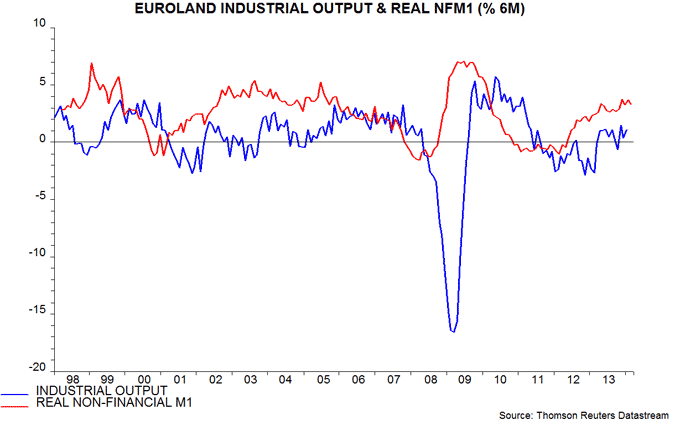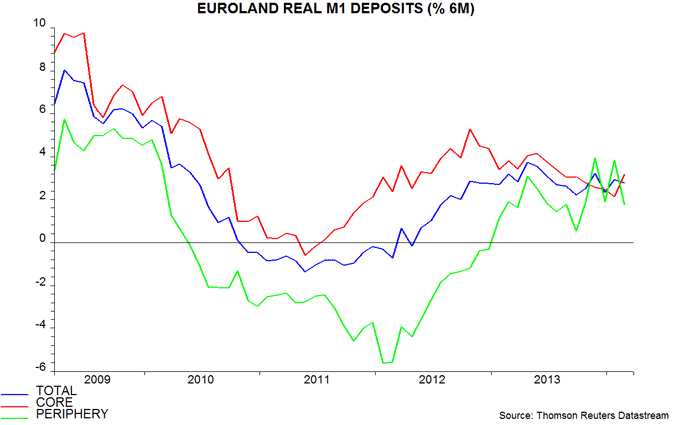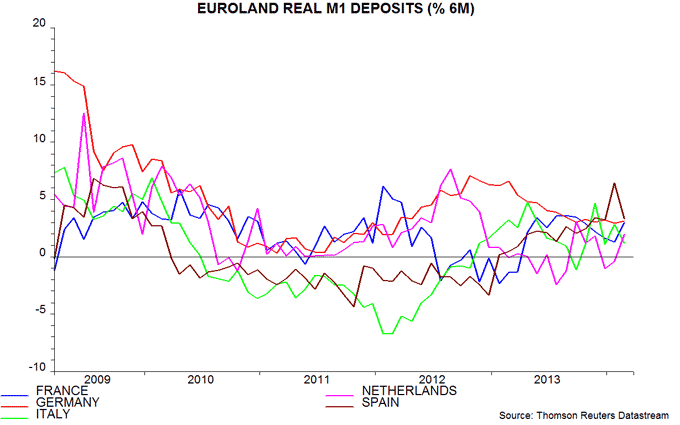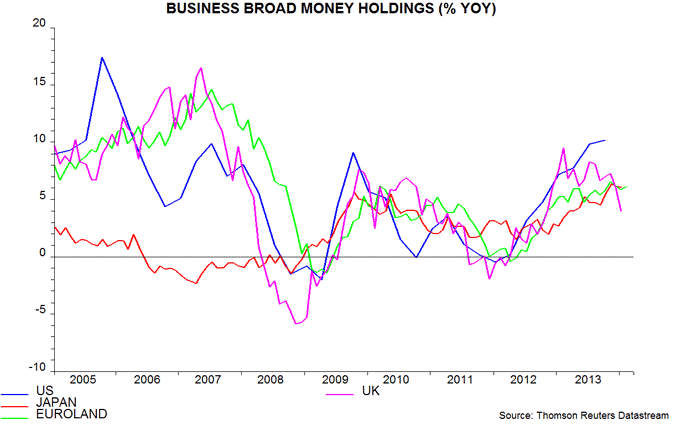Eurozone monetary trends signalling stable economic expansion
Eurozone real non-financial M1* – the best monetary leading indicator of the economy, with a flawless track record in recent years – continues to signal moderately positive growth prospects. Country trends suggest similar economic performance in the core and periphery.
Real non-financial M1 rose by 3.3% in the six months to February, or 6.7% annualised. Growth has been broadly stable in recent months and is above the long-run average. The six-month change turned negative before the 2008 and 2011 recessions and positive before the 2009 and 2013 recoveries – see first chart. Current trends are consistent with GDP expansion of about 2% annualised through late 2014.
The ECB publishes country data on overnight deposits**, which dominate swings in M1. Six-month growth of real deposits in the core and peripheral groupings has been similar recently, suggesting economic convergence – second chart. Peripheral expansion was lower than in the core in every month between September 2008 and October 2013.
Country-level divergences have also narrowed, with real deposit growth now almost equal in Spain, Germany and France and only slightly lower in the Netherlands and Italy – third chart.
The economic recovery has defied the predictions of followers of broad money and credit. Six-month growth of Eurozone real M3 edged up in February but was still only 0.5% (1.0% annualised), while bank credit continues to contract, albeit at a slowing pace.
The broad monetarists have been wrong because they have ignored a reallocation of households savings away from money holdings due to near-zero deposit interest rates. Low M3 growth, therefore, has not constrained corporate liquidity or the supply of money to finance economic transactions. Corporate M3 deposits, indeed, grew by 6.1% in the year to February. Similar solid expansion of corporate liquidity is occurring in other major economies – fourth chart.
Households are likely to continue to shift funds out of the banking system, especially with ECB officials speculating about imposing a negative deposit rate, the cost of which banks would be forced to pass on to savers and / or borrowers.
The creditist bears were wrong because credit trends affect the economy only via their impact on the money supply. Lending contraction has not prevented M3 from expanding, albeit weakly, because of positive contributions from other “monetary counterparts”. In particular, the strong Eurozone balance of payments position has resulted in banks’ net external assets rising by €389 billion over the last 12 months, equivalent to 3.9% of the stock of M3.
*Notes and coin in circulation plus overnight deposits of households and non-financial corporations divided by consumer prices, seasonally adjusted.
**Country figures cover all sectors (i.e. financial as well as non-financial).





Reader Comments